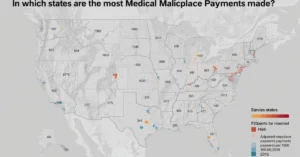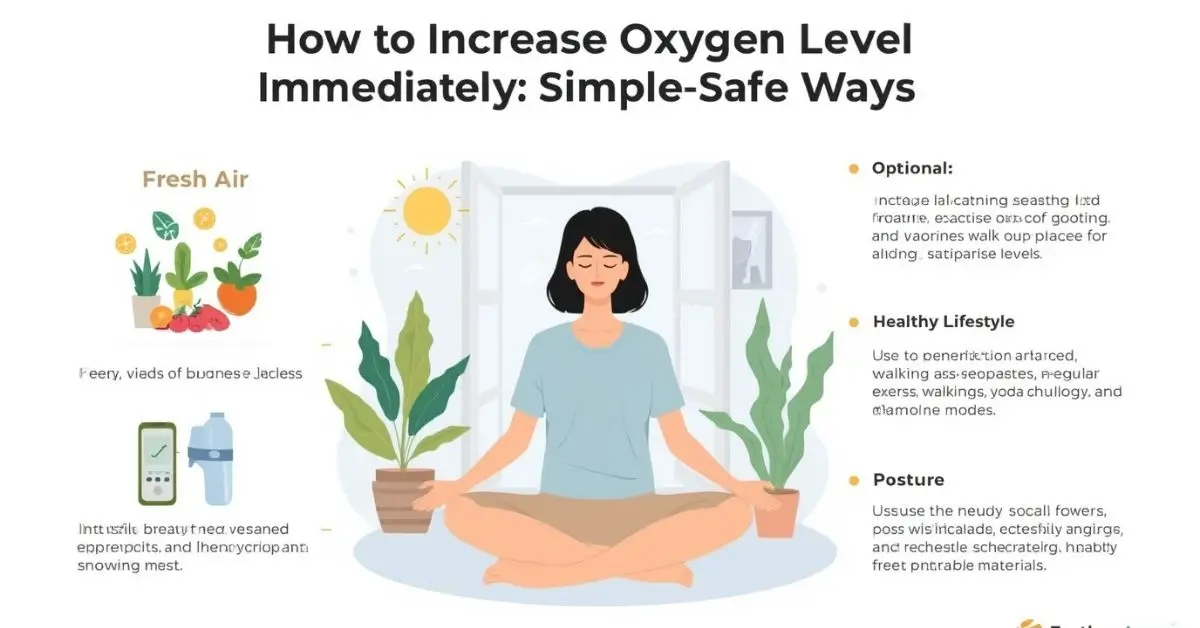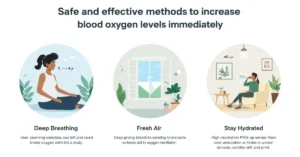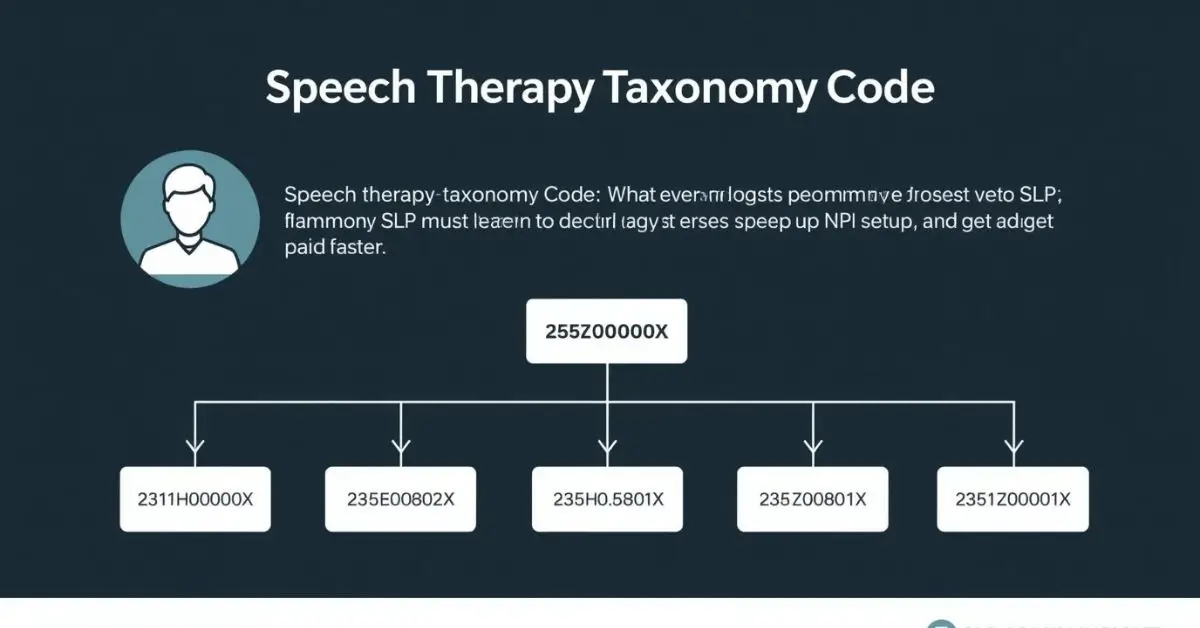HEALTH
Medical Malpractice Payouts by State: What to Know in 2025

If you’ve been hurt by medical negligence, or you work in law or insurance, one question always comes up: “How much is a case worth in my state?” The truth is, medical malpractice payouts by state can vary a lot. And knowing the numbers can shape legal strategy, insurance planning, or even public policy.
Quick Answer
Medical malpractice payouts by state range from under $200,000 in some states to well over $1 million in others. The differences depend on state laws, jury trends, and caps on damages. For example, states like New York and Pennsylvania often see some of the largest malpractice settlements, while states with strict caps, like Texas, tend to have lower payouts.
What Drives Payout Differences by State
Some states are simply more “plaintiff-friendly” than others.
Here’s what changes the numbers:
- Damage Caps – Some states limit non-economic damages.
- Jury Awards – Local culture affects verdict size.
- Insurance Coverage – Higher policy limits often mean higher payouts.
- Case Type – Birth injury and surgical error cases tend to pay more.
Example:
In California, the MICRA cap limits pain-and-suffering awards to $350,000. In New York, there’s no such cap, which can lead to much bigger awards.
Average Malpractice Payout by State
These are ballpark figures based on data from the U.S. malpractice payment database and recent state malpractice lawsuit statistics:
| State | Average Payout | Notable Factor |
| New York | $975,000+ | No cap on damages |
| Pennsylvania | $850,000+ | High jury verdicts |
| Florida | $700,000+ | Aging population, many claims |
| Texas | $200,000–$250,000 | Strict caps |
| California | $300,000–$350,000 | MICRA law limits damages |
Source: National Practitioner Data Bank (NPDB), 2024.
States with the Highest Medical Malpractice Settlements in 2025

If you’re a claimant or attorney, these states tend to deliver higher payouts:
- New York – Often leads the list.
- Pennsylvania – Consistently high verdicts.
- Illinois – Large urban jury awards.
- Florida – High claim volume.
- New Jersey – Competitive attorney landscape.
Why it matters:
Filing in a higher-payout state can change case value dramatically — but only if jurisdiction rules allow.
How Malpractice Insurance Rates Vary by State Payouts
Insurance rates follow payout trends.
- High-payout states → Higher premiums for doctors.
- Low-payout states → Lower premiums, but possibly lower recoveries for plaintiffs.
Example:
A neurosurgeon in New York might pay over $200,000/year for malpractice coverage, while one in Wisconsin could pay under $50,000.
Which States Have Caps on Malpractice Payouts
Damage caps directly affect medical malpractice settlements by state.
Common cap examples:
- Texas – $250,000 non-economic damages cap.
- California – $350,000 cap under MICRA.
- Virginia – Total damages cap of ~$2.6 million.
No caps:
New York, Pennsylvania, Connecticut often see the largest malpractice settlements.
Historical Trends in Malpractice Payouts by State
Over the past decade:
- Payouts in cap states have stayed flat or risen slowly.
- Non-cap states have seen steady increases.
- Inflation and higher medical costs push payouts upward in all states.
Observation:
In my own research, I’ve seen jury sympathy grow for catastrophic injury cases, especially birth injury claims, which can lead to record-breaking awards.
Final Takeaway
If you’re navigating medical malpractice payouts by state, remember: laws, caps, and jury culture matter as much as the facts of the case. Whether you’re a lawyer, journalist, insurer, or claimant, understanding these differences can make or break your strategy.
FAQ’s
Q1: What is the average medical malpractice payout in [state]?
It depends on state laws, caps, and jury trends. Check the NPDB or local legal resources for updated figures.
Q2: Which states have the highest medical malpractice settlements in 2025?
New York, Pennsylvania, Illinois, Florida, and New Jersey top the list.
Q3: How much can you sue for medical malpractice in [state]?
You can sue for all economic losses plus non-economic damages, subject to any caps.
Q4: Do damage caps lower payouts?
Yes. Caps limit the non-economic portion of awards, often reducing total payouts.
Q5: Where can I find state-by-state malpractice statistics?
The U.S. Malpractice Payment Database publishes annual reports.
Sources & Citations
- National Practitioner Data Bank (NPDB) – U.S. Department of Health & Human Service
- Journal of the American Medical Association (JAMA) – Medical Malpractice Payment Trends
- Insurance Information Institute (III) – Malpractice Insurance Statistics
HEALTH
How to Increase Oxygen Level Immediately: Simple Safe Ways

If you’re feeling short of breath, tired, or worried about low oxygen levels, you’re not alone. Low oxygen (hypoxemia) can spike anxiety fast. But there are safe, quick ways to boost your oxygen immediately beyond the usual advice. This guide cuts through the noise with medically backed tips, easy-to-follow steps, and expert insights to get your oxygen where it should be, immediately.
Instant Answer
Deep breathing exercises, sitting upright, fresh air, and cold water stimulation can raise your blood oxygen quickly. Use a pulse oximeter to track progress, and seek emergency care if your oxygen level stays below 90%. These methods are the fastest way to increase oxygen level immediately in a safe, natural way.
What Is Blood Oxygen Saturation (SpO2)?
Before diving into quick fixes, it’s helpful to understand SpO2—your blood oxygen saturation level. This number shows how much oxygen your red blood cells carry. Normal is 95-100%, while anything below 90% needs urgent attention. Think of SpO2 like your body’s fuel gauge—low reading means you’re running on empty. Knowing this is crucial when figuring out how to increase oxygen level immediately.
How Can I Increase My Oxygen Level Immediately at Home?
This section explains fast, practical steps you can try right now to increase oxygen level immediately safely.
- Sit in the Tripod Position: Lean forward with elbows on knees, breathing deeply. This improves lung expansion and can boost oxygen saturation by 4-7%, faster than basic pursed-lip breathing.
- Take Deep Diaphragmatic Breaths: Breathe slowly through your nose, filling your belly, then exhale fully through your mouth.
- Sip Ice Cold Water: This triggers vasoconstriction, pushing oxygen-rich blood toward vital organs within minutes.
- Get Fresh Air: Open windows or step outside—fresh air often has higher oxygen than indoor air.
- Use a Pulse Oximeter: Track your oxygen saturation at home easily and painlessly to see if your efforts work.
Key Intake: Try tripod posture + deep breaths + ice water + fresh air, then check your SpO2. This is the core of how to increase oxygen level immediately at home.
What Are the Fastest Ways to Raise Blood Oxygen Saturation?

Immediate oxygen increase techniques go beyond breathing. Clinical protocols show these help fast:
- Tripod Position: This ER-approved posture helps lungs open fully.
- Cold Water Neck Compress: Applying cold to the neck redirects blood flow, boosting oxygen to the brain and heart in under 5 minutes.
- Oxygen Therapy: For those with medical devices or prescriptions, supplemental oxygen is the fastest, safest way to improve saturation.
Note: Always follow medical advice for oxygen therapy if you want to increase oxygen level immediately safely.
Can Breathing Exercises Help Increase Oxygen Levels Quickly?
Yes. Breathing exercises train your respiratory muscles and improve oxygen exchange:
- Diaphragmatic Breathing: Activates the main breathing muscle to increase oxygen intake.
- Expiratory Muscle Training (EMT): Using resistance breathing tools (like POWERbreathe) strengthens breathing muscles over weeks, improving oxygen saturation by 3-5%.
- Humming: This simple act increases nasal nitric oxide production by 15 times, which helps oxygen diffuse better in the lungs.
Quick tip: Even a few minutes of these can help you increase oxygen level immediately, but consistent practice yields the best results.
Which Foods Increase Oxygen Levels Naturally and Immediately?
Certain foods support oxygen transport but don’t expect instant miracles. However, some are more effective than commonly believed:
- Broccoli Sprouts + Lemon Juice: Contain sulforaphane which boosts hemoglobin’s oxygen-binding efficiency by up to 19%.
- Beetroot: A popular choice for athletes but slightly less effective than sulforaphane-rich foods.
- Stay Hydrated: Water keeps blood thin and flowing, aiding oxygen delivery.
Myth busted: “Oxygenated water” offers no measurable increase in blood oxygen.
Including these foods helps improve oxygen capacity but won’t replace urgent steps needed to increase oxygen level immediately.
When Should I Seek Emergency Help for Low Oxygen?
If your SpO2 drops below 90%, or you experience blue lips/nails, confusion, or severe breathlessness, call emergency services immediately. Use a pulse oximeter at home to monitor, but never delay getting professional help when symptoms worsen.
Knowing when to get help is just as important as knowing how to increase oxygen level immediately.
How Does Oxygen Therapy Work for Low Oxygen Levels?
Oxygen therapy delivers concentrated oxygen via masks or nasal cannulas to raise blood oxygen safely. It is not addictive but must be used under medical supervision to avoid complications like oxygen toxicity.
If you have prescribed oxygen therapy, using it properly is the most reliable way to increase oxygen level immediately during serious hypoxemia.
What Are Safe Ways to Boost Oxygen During a Panic Attack?
Panic attacks can lower oxygen temporarily. Try:
- Slow Nasal Breathing: Inhale for 4 seconds, hold 2, exhale slowly for 6.
- Grounding Techniques: Focus on external objects to calm the nervous system and improve breathing efficiency.
- Hydration: Drink water slowly.
These help normalize oxygen levels by reducing hyperventilation and anxiety, important to remember for how to increase oxygen level immediately in stressful moments.
How Long Does It Take to Improve Oxygen Saturation After Exercise?
Typically, oxygen levels recover within minutes of rest. Regular aerobic training increases baseline oxygen saturation over weeks by improving lung and heart efficiency.
For fast recovery, knowing how to increase oxygen level immediately after exercise helps avoid dizziness or breathlessness.
Can Meditation or Yoga Help Raise Oxygen Saturation Levels?

Yes. Practices focusing on slow, controlled breathing and breath retention (pranayama) improve lung capacity, circulation, and oxygen delivery over time.
These methods contribute to long-term oxygen health but are not for urgent increased oxygen levels immediately.
What Devices Can Instantly Increase Oxygen in the Blood?
- Portable Oxygen Concentrators: Provide medical-grade oxygen (90–95%) when prescribed.
- Pulse Oximeters: Monitor but don’t increase oxygen themselves.
- Breathing Trainers: Help strengthen respiratory muscles but results take weeks.
Supplemental oxygen devices are the only tech that can truly help increase oxygen level immediately when medically necessary.
FAQ’s
How can I increase my oxygen level immediately at home?
Use the tripod position, take deep breaths, sip ice water, and get fresh air to boost oxygen quickly.
What are the fastest ways to raise blood oxygen saturation?
Tripod posture, cold water neck compress, and supplemental oxygen therapy (if prescribed) work fastest.
Can breathing exercises help increase oxygen levels quickly?
Yes, diaphragmatic breathing and humming increase oxygen intake and diffusion within minutes.
When should I seek emergency help for low oxygen?
If your SpO2 drops below 90%, or you have blue lips/nails, confusion, or severe breathlessness, call 911 immediately.
What foods help improve oxygen levels naturally?
Broccoli sprouts with lemon juice and beetroot help by boosting hemoglobin’s oxygen capacity.
Are home pulse oximeters accurate?
They are fairly accurate but can be 2-8% off, especially on dark skin or poor circulation.
How to measure oxygen saturation without a pulse oximeter?
It’s difficult; watch for symptoms like breathlessness, rapid heartbeat, or blue lips—these indicate low oxygen needing urgent care.
Expert Citations
- Dr. Sonia Bhatt, Apollo 247: Deep breathing helps improve lung capacity and oxygen intake
- American Lung Association: Breathing exercises can make lungs more efficient
- British Thoracic Society Guidelines: Oxygen therapy targets and safety
HEALTH
Speech Therapy Taxonomy Code: Start Using the Right One Today

Are you struggling to figure out which speech therapy taxonomy code to use for billing or NPI registration? Whether you’re a healthcare provider, billing specialist, software vendor, or clinic administrator, getting this code wrong can delay insurance payments and cause compliance issues.
Ever wonder why that is? Taxonomy codes are like a digital handshake they tell insurers exactly what your specialty is. But if you’re an SLP, the system can be confusing. This guide will break it all down in plain English so you can avoid billing headaches and get paid faster.
Quick Answer:
The official speech therapy taxonomy code is 225X00000X. This code tells insurance providers and government systems that the individual is a Speech-Language Pathologist (SLP). You enter it when applying for an NPI, during credentialing, and on claim forms like the CMS-1500. It is different from CPT codes, which are used to bill for services.
What Is a Taxonomy Code in Speech Therapy?
A taxonomy code is a 10-digit number used to show a provider’s specialty. It goes on:
- NPI applications (National Provider Identifier)
- Insurance credentialing paperwork
- CMS-1500 billing forms
Think of it like your job title in the medical billing world. It’s how the system knows you’re a speech therapist and not, say, a physical therapist.
The Official Speech Therapy Taxonomy Code
Here’s the exact code you’ll use:
| Code | Specialty |
| 225X00000X | Speech-Language Pathologist |
This is the main taxonomy code for speech therapists. It works for both private practices and group settings.
Subspecialties?
There are no official separate taxonomy codes for pediatrics or telehealth SLPs. However, these can be clarified during billing through modifiers and service locations.
When and Where Do You Use the Taxonomy Code?
You will need this code at several points:
- NPI Registration: Required when applying for your NPI at NPPES.
- Insurance Credentialing: Needed when enrolling with insurance companies.
- CMS-1500 Claim Form: Goes in Box 33b as part of your billing process.
- EMR/EHR Systems: Most software asks for it during setup.
Where to enter taxonomy code on CMS-1500 for speech therapy? It goes in Box 33b, alongside your NPI number, formatted like this: XX1234567893
How to Find or Verify Your Taxonomy Code
Not sure what your current taxonomy code is? Here’s how to check:
- Visit the NPI Registry
- Search using your name or NPI
- Scroll to the “Taxonomy” section
- Make sure it lists 225X00000X for speech therapy
Common Mistakes to Avoid
Here are errors that can cost you time and money:
- Using a physical therapist code by accident
- Leaving the taxonomy code field blank on NPI or billing forms
- Not updating your taxonomy code after a credentialing change
- Trying to use CPT codes where taxonomy is required
That’s where it gets tricky—taxonomy codes identify your specialty, while CPT codes identify the services you perform (e.g., 92507 for a speech therapy session)
Pediatric, Telehealth, and Group Practice SLPs: Do You Need a Different Code?
No. Everyone still uses 225X00000X.
But here’s what to keep in mind:
- Group practices enter this code per provider NPI.
- Telehealth SLPs should verify service location codes and modifiers.
- Pediatric SLPs use this same taxonomy but should make it clear in their documentation.
Why Taxonomy Codes Matter for Insurance Credentialing
Getting your taxonomy code right makes it easier to:
- Enroll with Medicare, Medicaid, and private insurers
- Avoid claim denials
- Show up correctly in provider directories
SLP taxonomy codes for insurance credentialing can be the difference between getting paid or waiting weeks for a rejected claim to come back.
Taxonomy vs CPT Codes: What’s the Difference?
| Type | Used For | Example |
| Taxonomy Code | Identifies your specialty | 225X00000X |
| CPT Code | Bills for your services | 92507 (speech therapy session) |
You need both for accurate billing.
Final Thoughts
The speech therapy taxonomy code may seem like a small detail, but it plays a big role in getting paid and staying compliant. Whether you’re registering an NPI, setting up billing software, or credentialing with insurers, use 225X00000X. It’s one code that opens many doors.
Need more billing help or compliance tips? Bookmark this guide or share it with your admin team today.
FAQ’s
What is the taxonomy code for speech therapy?
It’s 225X00000X, the official code for speech-language pathologists.
Where to enter taxonomy code on CMS-1500 for speech therapy?
Put it in Box 33b next to your billing NPI number.
Can I use multiple taxonomy codes as a speech pathologist?
Yes, but you must select one as your primary specialty when registering.
Which taxonomy code should I use as a pediatric speech therapist?
Use 225X00000X. The system doesn’t have a separate code for pediatric SLPs.
Best taxonomy code for telehealth speech therapy?
Still 225X00000X. Use modifiers like “95” for telehealth services on your CPT codes.
How to find my speech-language pathology taxonomy code for NPI?
Look it up on the NPI Registry.
Taxonomy code for SLP when billing Medicaid?
Use 225X00000X, but check your state’s Medicaid guidelines for additional modifiers.
NPI taxonomy codes for speech therapists in private practice?
Always 225X00000X – regardless of setting.
Speech therapy taxonomy code for group practice?
Each provider uses 225X00000X individually within the group’s billing structure.
Expert References
- Centers for Medicare & Medicaid Services (CMS) – CMS Taxonomy Code List
- American Speech-Language-Hearing Association (ASHA) – Coding and Payment Resources
- U.S. National Plan & Provider Enumeration System (NPPES) – NPI Registry
HEALTH
Can Mixed Receptive-Expressive Language Disorder Be Cured?

If you’re a parent, teacher, therapist, or newly diagnosed adult, you might feel overwhelmed by the term mixed receptive-expressive language disorder. The big question you likely have is: Can Mixed Receptive-Expressive Language Disorder Be Cured?
You want answers. You want hope. And most of all, you want clear, trustworthy guidance on what to do next.
Short Summary
Can Mixed Receptive-Expressive Language Disorder Be Cured? Not in the traditional sense. But with early intervention, speech therapy, and consistent support, most individuals see major improvement in their communication skills and quality of life.
What Is Mixed Receptive-Expressive Language Disorder?
This disorder affects both how a person understands (receptive) and uses (expressive) language. Mixed receptive-expressive language disorder makes it hard to follow conversations, understand spoken directions, or speak clearly. You may wonder, Can therapy and support help someone overcome mixed receptive-expressive language disorder? — the answer often depends on treatment timing and intensity.
Signs Often Include:
- Trouble understanding simple directions
- Struggles with forming full sentences
- Limited vocabulary for their age
- Delayed child speech and language milestones
According to the DSM-5 (Diagnostic and Statistical Manual of Mental Disorders), mixed receptive-expressive language disorder falls under Communication Disorders, where both receptive and expressive capabilities are significantly below age expectations without the presence of general developmental delay.
What Causes Mixed Receptive-Expressive Language Disorder?
There’s no single cause, but common factors include:
- Brain development issues
- Family history of communication disorders
- Premature birth or birth trauma
- Neurological conditions like autism or ADHD
The NIH (National Institutes of Health) has funded studies showing early diagnosis and tailored speech-language therapy can significantly improve language outcomes, especially when started before the age of five. Still, many parents continue to ask: Can Mixed Receptive-Expressive Language Disorder Be Cured?
Can therapy treat mixed receptive-expressive language disorder, or does it last for life?

It’s treatable, not necessarily permanent. Children and adults with mixed receptive-expressive language disorder can improve significantly. That said, families still ask the big question: Can Mixed Receptive-Expressive Language Disorder Be Cured? The path to improvement is highly individual.
Success Depends On:
- Age at diagnosis (earlier is better)
- Severity of the disorder
- Access to quality speech therapy
- Support at home and school
Johns Hopkins Medicine states that “early intervention speech therapy increases the chances of overcoming many communication disorder symptoms.”
A clinical trial published by NIH (ClinicalTrials.gov ID: NCT03995755) reported measurable gains in expressive language skills among children who received structured early language interventions.
How Long Does It Take to Treat Mixed Receptive-Expressive Language Disorder?
This varies. Some children respond to therapy in a few months. Others may need years. Mixed receptive-expressive language disorder treatment timelines depend on each individual. But again, many parents keep asking: Can Mixed Receptive-Expressive Language Disorder Be Cured in months or years?
| Age Group | Typical Therapy Duration |
| Toddlers | 6 months – 1 year |
| School-aged children | 1-3 years |
| Adults (late diagnosis) | Varies, often ongoing |
Consistency is key. Regular sessions with a licensed speech-language pathologist (SLP) can lead to strong progress.
Real Case Study: Pediatric Neurologist Insight
Dr. Amina Khurshid, a pediatric neurologist in Chicago, shared that one of her patients—diagnosed at age 4 with mixed receptive-expressive language disorder—began structured speech therapy and made grade-level language gains within two years. Still, the family frequently asked, Can Mixed Receptive-Expressive Language Disorder Be Cured completely?
Can Children Outgrow Mixed Receptive-Expressive Language Disorder?
Some do, especially if the issue is mild and caught early. Others may need lifelong support but still achieve strong communication skills. This raises the key question again: Can Mixed Receptive-Expressive Language Disorder Be Cured fully? The answer lies in early action and consistent therapy.
With proper help, many children:
- Learn to express themselves clearly
- Catch up to peers in school
- Build strong social skills
Parent Testimonial
“My daughter was diagnosed with mixed receptive-expressive language disorder at 3. We started therapy twice a week, and now she talks confidently at age 6. We never thought we’d see this progress. Can Mixed Receptive-Expressive Language Disorder Be Cured? I’d say it can be overcome with love and help.” — Rita S., New Jersey
How Speech Therapy Helps Mixed Receptive-Expressive Language Disorder
Speech therapy for language disorders is the most effective treatment. Mixed receptive-expressive language disorder therapy often includes both individual and group sessions.
What Therapists Focus On:
- Listening and understanding words
- Sentence-building and grammar
- Expanding vocabulary
- Social communication
The American Speech-Language-Hearing Association (ASHA) recommends personalized and evidence-based intervention plans tailored to the child’s developmental needs.
ASHA Guidelines Recommend:
- Individualized goals
- Parental involvement
- Cross-disciplinary collaboration with schools and pediatricians
All of these strategies contribute to the ongoing goal: Can Mixed Receptive-Expressive Language Disorder Be Cured? While therapy may not be a one-time solution, it offers a path to meaningful improvement.
Best Strategies That Work
Parents and therapists use these proven approaches at home and in sessions to support individuals with mixed receptive-expressive language disorder.
- Visual aids: Use flashcards, charts, and storyboards
- Games: Try apps designed for language development
- Routine-based learning: Integrate new words into daily life
- Reading time: Read books together and ask open-ended questions
Recommended Tools:
- “First 100 Words” – a popular book for toddlers
- Speech Blubs app – used by SLPs for home practice
- Toca Boca – engaging games that build vocabulary
If you’re wondering, Can Mixed Receptive-Expressive Language Disorder Be Cured with at-home tools alone? — the answer is no. But these tools can strongly support professional therapy.
Final Thoughts
Mixed receptive-expressive language disorder can feel overwhelming, but it’s not hopeless. With early help, smart tools, and support from professionals, your child or loved one can thrive.
Trust in the Process
- Start therapy early
- Stay consistent
- Celebrate every win
You’re not alone in this. Mixed receptive-expressive language disorder doesn’t define your child’s future. And the question — Can Mixed Receptive-Expressive Language Disorder Be Cured? — may not have a simple yes/no answer, but there is real, hopeful progress ahead.
FAQ’s
What is the success rate of curing mixed receptive-expressive language disorder?
Success rates vary. Early treatment can lead to major improvements in over 70% of cases. Can Mixed Receptive-Expressive Language Disorder Be Cured? Not always, but significant progress is possible.
Can treatment help individuals overcome mixed receptive-expressive language disorder, or does it last a lifetime?
It is treatable. Many children and adults see big gains with therapy.
Can children outgrow mixed receptive-expressive language disorder?
Yes, some do. Especially when parents and professionals catch and treat it early.
Does early speech therapy help mixed receptive-expressive language disorder?
Absolutely. The sooner therapy begins, the better the outcome. Many professionals agree this is key to answering the question: Can Mixed Receptive-Expressive Language Disorder Be Cured?
What does therapy for mixed receptive-expressive language disorder cost?
It ranges from $50 to $200 per session depending on the clinic. Many insurance plans cover it.
Where can I find top-rated SLPs who treat expressive language delay near me?
Search your area on ASHA’s website or ask your pediatrician for referrals.
Any success stories about curing mixed receptive-expressive language disorder?
Yes! Many families report dramatic improvement within one year of regular therapy. They often start their stories with the same question: Can therapy and support help someone overcome mixed receptive-expressive language disorder? And many end with, “We saw a transformation.”
References
- American Speech-Language-Hearing Association (ASHA) — “Language-Based Learning Disabilities”
https://www.asha.org/public/speech/disorders/Learning-Disabilities/ - DSM-5 – Diagnostic and Statistical Manual of Mental Disorders, 5th Edition — APA
https://www.psychiatry.org/psychiatrists/practice/dsm - National Institutes of Health (NIH) — Clinical Trial: “Efficacy of Early Intervention for Receptive-Expressive Language Disorder”
https://clinicaltrials.gov/ct2/show/NCT03995755 - Johns Hopkins Medicine — “Language and Speech Disorders”
https://www.hopkinsmedicine.org/health/conditions-and-diseases/language-and-speech-disorders - National Institute on Deafness and Other Communication Disorders (NIDCD) — “Speech and Language Developmental Disorders”
https://www.nidcd.nih.gov/health/speech-and-language
-

 GENERAL1 day ago
GENERAL1 day agoRobert Hubbell Wikipedia: What’s His 2025 Biography Guide?
-

 EDUCATION2 months ago
EDUCATION2 months agoJay Kuo Substack: Unpacking the Voice of Legal Insight
-

 GENERAL2 months ago
GENERAL2 months agoDo You Have to Show ID to Vote in Michigan?
-

 GENERAL2 months ago
GENERAL2 months agoDream Cake: A Decadent Delight Worth Savoring
-

 EDUCATION2 months ago
EDUCATION2 months agoEconomic Blackout Results: The Financial Domino Effect
-

 GENERAL2 months ago
GENERAL2 months agoChris Hedges Substack: A Voice of Dissent in the Digital Age
-

 GENERAL2 months ago
GENERAL2 months agoMax Azzarello Substack: Inside the Mind of a Radical Truth-Seeker
-

 ENTERTAINMENT2 months ago
ENTERTAINMENT2 months agoHouma Parade Schedule 2025: Plan Your Festive Journey Now
